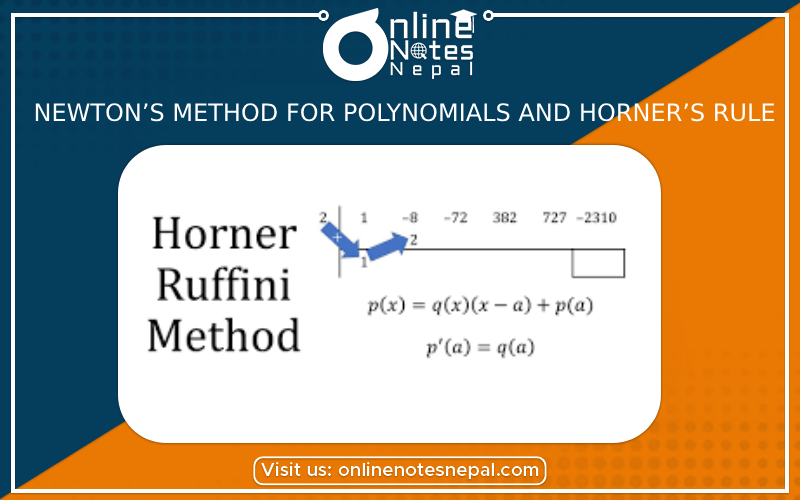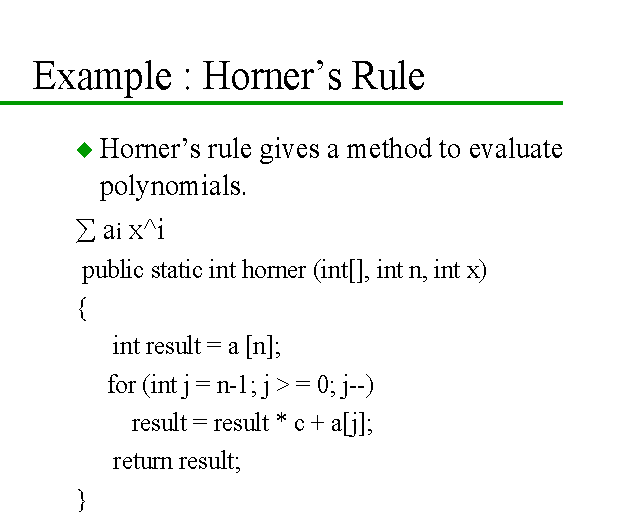Published by: Dikshya
Published date: 18 Jul 2023


Newton's Method can be used to find the roots of a polynomial equation. Given a polynomial function f(x), the method iteratively improves an initial guess x0 by using the tangent line to approximate the root. The iteration formula for Newton's Method is:
x_(n+1) = x_n - f(x_n) / f'(x_n)
where x_(n+1) is the updated guess, x_n is the current guess, f(x_n) is the function value at x_n, and f'(x_n) is the derivative of the function at x_n.
The process is repeated until the desired level of accuracy is achieved or until convergence is reached. Newton's Method typically converges rapidly when the initial guess is close to a root of the polynomial. However, it may fail or exhibit slow convergence if the initial guess is far from a root or encounters singular points.
Horner's Rule is a technique for evaluating polynomials efficiently, especially for large degree polynomials. It allows the polynomial to be evaluated with fewer arithmetic operations by reducing the number of multiplications required.
The rule is based on expressing a polynomial of degree n as a nested form:
P(x) = a0 + x(a1 + x(a2 + ... + x(an-1 + x(an)) ... ))
where a0, a1, ..., an are the coefficients of the polynomial.
By using this nested form, the polynomial can be evaluated iteratively by starting from the innermost parentheses and working outward. Here's the step-by-step process:
The final result is the value of the polynomial P(x) at a given value of x.
Horner's Rule reduces the number of multiplications required to evaluate a polynomial, which can be advantageous for efficiency. It is commonly used in numerical computations and computer algorithms that involve polynomial evaluations, such as in Newton's Method for polynomials.